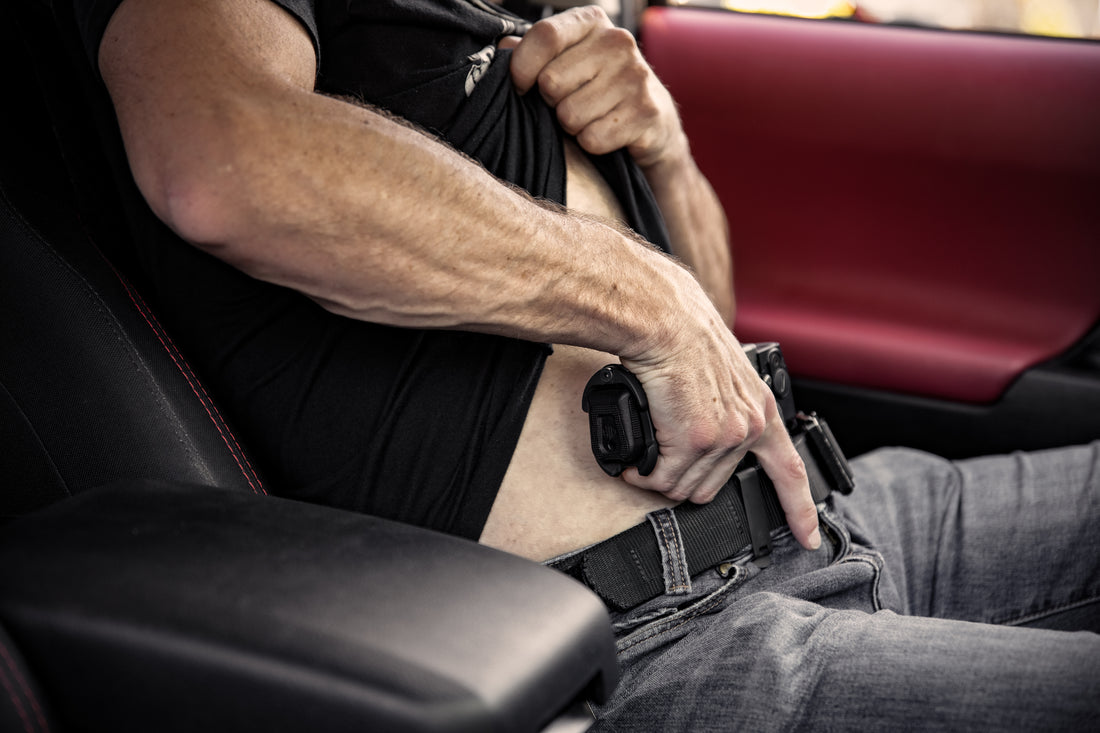The ability to quickly and efficiently draw your concealed carry firearm from its holster is a crucial skill for any responsible gun owner. A proper draw stroke can make a significant difference in your ability to effectively respond to a threat. In this blog post, we will explore the essential steps and techniques for executing a safe and efficient draw stroke from concealment, ensuring that you are prepared to defend yourself in a critical situation.
1. Choose the Right Holster and Position:
Selecting the right holster and position is vital for a smooth and secure draw stroke. Consider the following factors:
- Holster Type: Choose a holster specifically designed for concealed carry, ensuring it securely retains your firearm while allowing for a smooth draw. Popular options include inside-the-waistband (IWB) and appendix carry holsters.
- Holster Fit: Ensure the holster fits your firearm properly and provides sufficient retention to keep it securely in place during daily activities.
- Placement: Position the holster in a location that allows for a natural and efficient draw stroke while maintaining comfort and concealment. Experiment with different positions to find the one that works best for you.
2. Establish a Solid Grip:
A proper grip on your firearm is essential for maintaining control and accuracy during the draw. Follow these steps:
- Master Hand Position: Place your master hand high on the backstrap of the firearm, ensuring a firm and secure grip. The webbing between your thumb and index finger should be as high as possible.
- Support Hand Position: Bring your support hand quickly and firmly to the grip, interlacing your fingers with the master hand. This two-handed grip provides optimal control and stability.
3. Clearing Clothing and Accessing the Firearm:
When drawing from concealment, you must efficiently clear any clothing or obstructions that may impede your access to the firearm. Here's how:
- Establish a "Master Hand Path": Practice a consistent and repeatable motion that clears clothing and creates a path to the firearm. This motion may involve sweeping aside a cover garment or lifting your shirt or jacket.
- Avoid Fumbling: Train to perform this motion smoothly and confidently, minimizing any unnecessary movements that can lead to fumbling or delays in accessing the firearm.
4. Draw the Firearm and Extend:
Once you have cleared your clothing and have a secure grip on the firearm, it's time to draw and extend the firearm toward the target. Follow these steps:
- Extract the Firearm: With a firm grip, draw the firearm smoothly and swiftly from the holster, maintaining muzzle discipline and trigger finger discipline throughout the process.
- Extend and Present: As the firearm clears the holster, extend your arms toward the target while maintaining a solid grip and proper alignment of the sights. Keep your eyes focused on the target, acquiring a proper sight picture.
5. Follow-Up Actions:
After the firearm is drawn and extended, additional actions may be necessary depending on the situation:
- Assess the Threat: Quickly evaluate the threat and determine if it is necessary to engage the target or seek cover and escape.
- Shooting Techniques: If engagement is required, apply the appropriate shooting techniques, including proper sight alignment, trigger control, and follow-through.
6. Practice, Practice, Practice:
Mastering the draw stroke from concealment requires regular and focused practice. Seek professional training and dedicate time to practicing the draw stroke, ensuring that it becomes second nature and can be performed confidently under stress.
The ability to execute a proper draw stroke from concealment is a critical skill for those who carry a concealed firearm. By following the steps outlined in this guide and dedicating time to practice, you can develop a smooth and efficient draw stroke that enhances your ability to respond effectively to a potential threat. Remember, safety and consistency are paramount, so always prioritize proper firearm handling and seek professional instruction to refine your skills.

